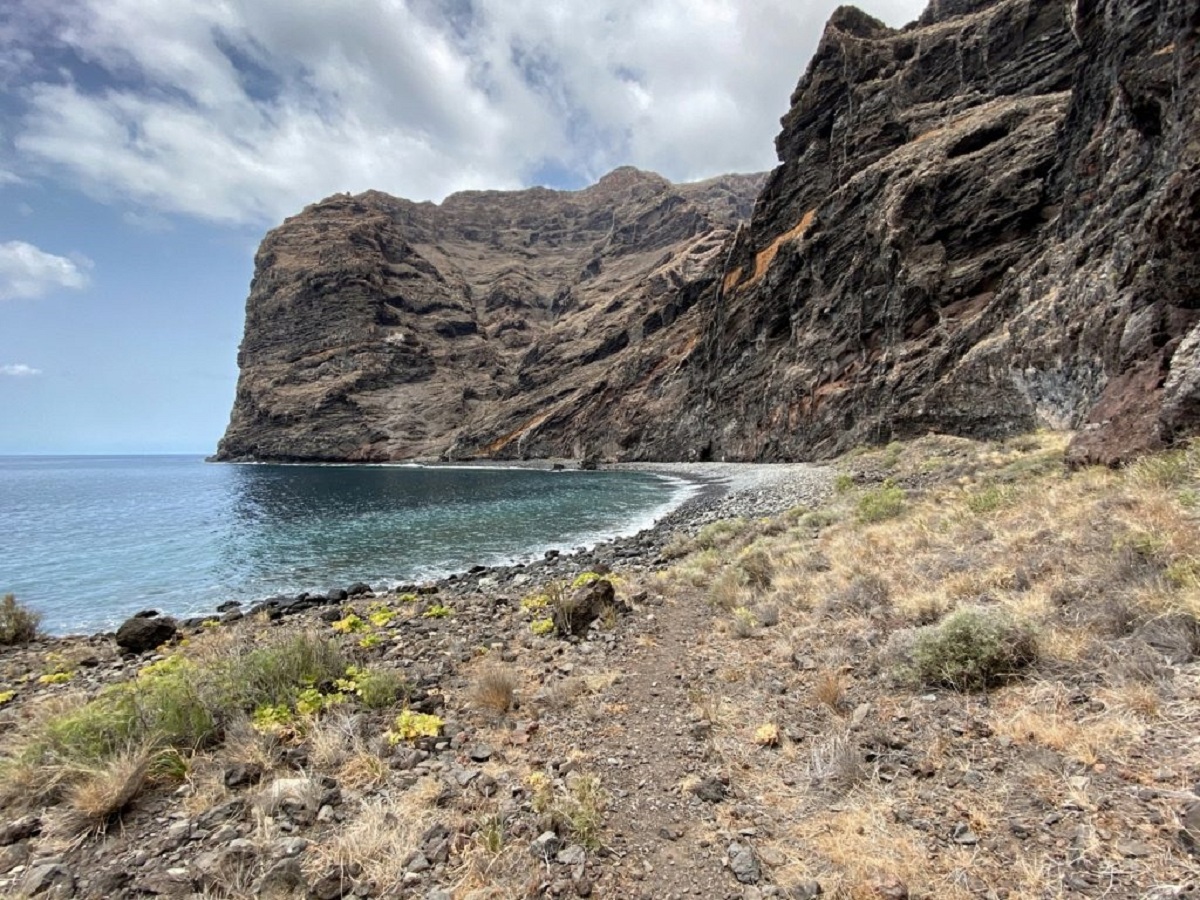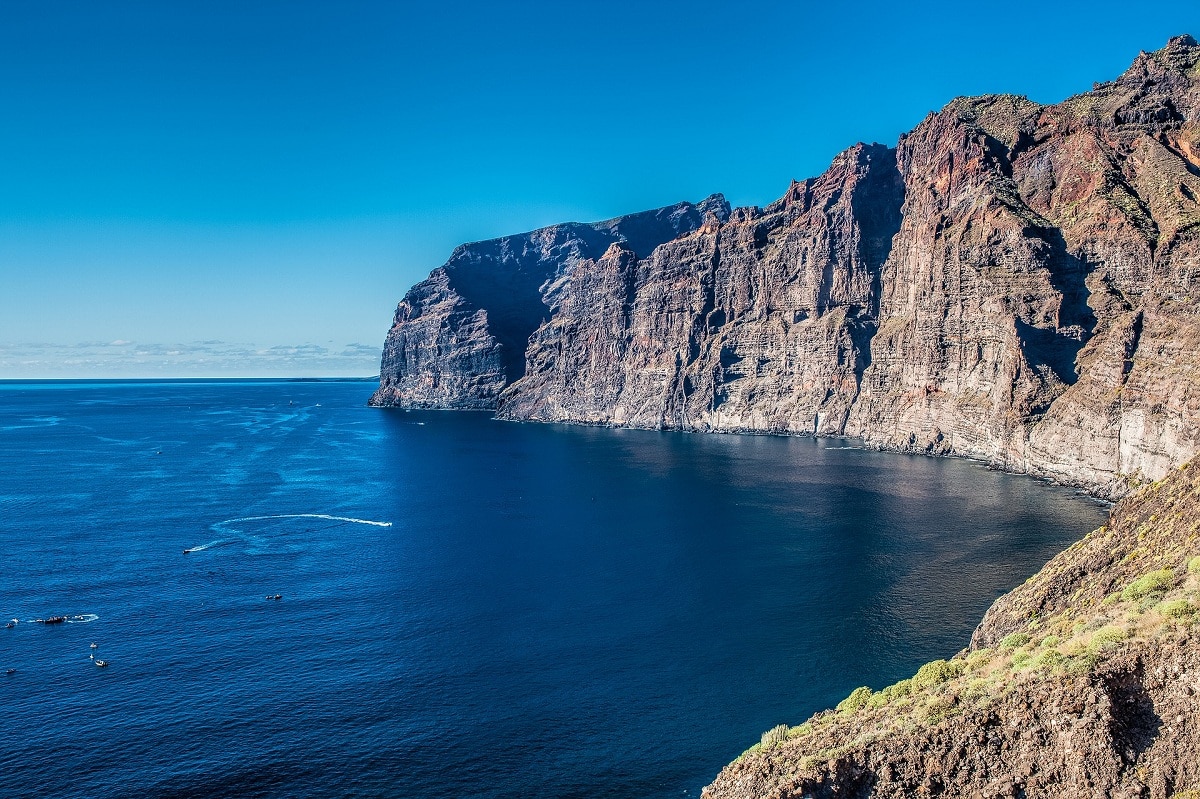
El cliff of the giants are volcanic geological wonders located west of Tenerife, Canary Islands, Spain. The site consists of impressive rock walls that reach a height of 600 meters. This extension extends from the port of Los Gigantes to Punta de Teno, an area of the Teno Rural Park. All of the above are distributed between the municipalities of Santiago del Teide and Buenavista del Norte. It is a great option to get away from the world and surrender to the majesty of nature. So, in the next few lines, we'll cover the history of the place, its features, things to do, and some traveler insights.
In this article we are going to tell you everything you need to know about Los Gigantes cliff and its characteristics.
History of the Giants cliff

Long ago, Tenerife was inhabited by the Guanches, an indigenous community of Berber origin in Africa. They have their own mythology, rooted in polytheism, the belief in different gods. They believed in a good god and a bad god called Guayota, the devil.
Then, worried people began to call the cliff the Devil's Wall, because its structure was characterized by black lava, the height facing the sea was unsettling, and the interior of the island was inaccessible, which reminded them of the times. In addition, they have the myth that the devil Guayota lived there after being defeated by Achaman, the god of goodness.
Before the Spanish conquest in the fifteenth century, the cliff now known as Los Gigantes was given the name "Wall of Hell". The reason for this is its impressive geography of dark lava, which for our ancestors presaged the end of the world.
This basaltic-type volcanic geological feature is located between the cities of North Buena Vista and Santiago del Teide. In addition, it is part of the Tenor National Park, one of the most visited places on the island, only surpassed by the Teide National Park. Los Gigantes cliffs are characterized by irregular sidewalls due to erosion and setback marks. They fall into the sea at heights between 300 and 600 meters. A characteristic of them is that they can be seen from the town of Masca or from the other side, with a completely different view than the coastal area of Tenor Country Park.
Key features
Because of their enormous height, the cliffs represent a unique geological formation. However, there are some ravines, such as: El Natero, Juan López, Barranco Seco, etc.; that favor the appearance of a gravel beach. These are usually boat tours and you can enjoy them on your next vacation.
The seabed at the site is only 30 meters deep. As a result, it is rich in flora and fauna, attracting fishermen, tourists, and divers. On the other hand, due to erosion, these walls are darker in color, with solidified lava in the curved sections. Its structure is so large that it can be admired in the town of Masca without any problems.
Its climate is praised because it is pleasant all year round. Therefore, the tourist development of the Coast of Santiago del Teide is built for the pleasure of tourists. In addition, you will find important hotel chains and the famous Los Gigantes marina.
For all of the above, if you decide to visit the cliffs, you can enjoy other tourist attractions near the area, such as Playa de Arena and Puerto de Santiago. With all this, the tourist enclave has been awarded a Blue Flag for all the treasures it has to offer its visitors.
Activities on the cliff of the Giants

Enriching your visit to this overwhelming room is as simple as you have options. The best way to see the entire landscape is by boat, from where you can see all the possible views of these stone walls. If you can visualize them in detail, you may be able to capture subtle memories of curious faces and characters.
Also, if you are an animal lover, you can have the opportunity to see pilot whales, about 250 of which swim in the sea. Likewise, bottlenose dolphins or bottlenose dolphins live in the area and usually come out every 5 minutes to breathe or play, so witness the friendliness of these animals.
Keep in mind that their sightings have been supervised by the Canary Islands government since 1995. In addition, this is one of the few places where guinchos or ospreys have been observed. Popular in the sky as they are cliff nesting birds.
As for water sports, the environment is conducive to daring diving and snorkelling thanks to its transparent waters and its rich marine biodiversity. As the bottom of the sea is not very deep, beginners and experts enter this blue world full of turtles, sponges, parrot fish, coral reefs, algae and caves.
In the same way, do not hesitate to contact companies focused on diving that work in the area. If going to the sea scares you a bit, the cliffs of Los Gigantes offer you less daring options such as kayaking, jet skiing and paddle surfing, which you can practice alone or with friends, family or even your dog.
Similarly, do not hesitate to contact companies focused on diving that work in the area. If going to the sea scares you a bit, the cliffs of Los Gigantes offer you less daring options such as kayaking, jet skiing and paddle surfing, which you can practice alone or with friends, family or even your dog.
volcanism
In the south of Tenerife is the so-called Territorio de la Luz, where some of the best examples of explosive volcanic activity are found. made up of large eruptions in the Las Cañadas region that released chunks of rock and volcanic ash, the clarity of pumice stone and igneous material dominates these large structures. Parts of the region are also characterized by the presence of hydromagmatic volcanism, which has produced landscapes such as Montaña Roja or Montaña Pelada.
Although the island was formed from the depths of the ocean due to volcanic activity, only the literature mentions volcanic eruptions after the conquest of the Canary Islands. The Cañadas del Teide National Park is the best place to get to know the legendary volcano of Tenerife, whose undisputed protagonist is Teide itself.
I hope that with this information you can learn more about Los Gigantes cliff and its characteristics.